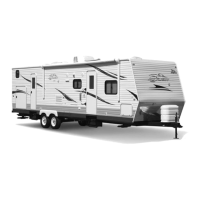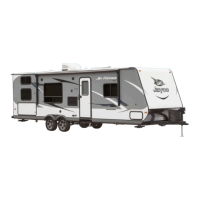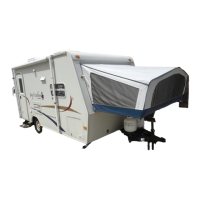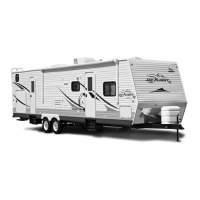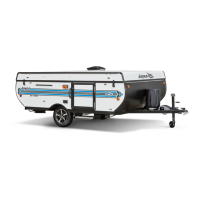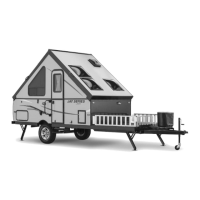32
manufacturer of your tow vehicle. If this overall weight is greater than the GCWR,
some contents must be removed to bring the combination into compliance with the
listed ratings.
3. Weigh the RV while attached to but excluding the tow vehicle. This will result in the
actual weight that is exerted on all of the RV tires. This weight may be subtracted from
the overall RV GVWR to determine the actual “tongue” weight.
4. With the RV still attached to the tow vehicle, weigh each wheel position separately to
ensure each tire is not overloaded.
5. Pull the RV onto the scale so only one tire is on the scale. Record the weight. Your
RV must remain as level as possible on the scale (even though an axle or side is not
physically on the scale).
6. To calculate the opposite side of the RV wheel position weight, subtract the rst side’s
weight from the weight determined in step #3.
If there is a dierence in the weights on one side of the vehicle as compared to weights on
the other side, components (tires, wheels, brakes, springs, etc.) on the heavier side could be
overloaded, even though the total axle load is within the GAWR.
Once actual weights are obtained, compare them to the weight
ratings to ensure you are below the posted minimum ratings.
See the Weight Terms and Loading Your RV sections for important weight information.
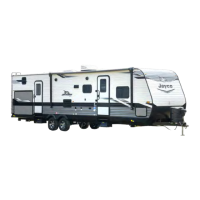
